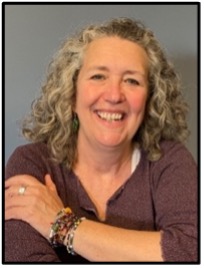In the 8th grade Michigan Merit Theatre Curriculum, the analyze in context section states, “Understand, analyze, and describe the arts in their historical, social, and cultural contexts.” It goes more deeply with the following:
ART.T.IV.MS.1 – Describe and compare universal characters and situations in dramas from and about various cultures and historical periods.
ART.T.IV.8.1 – Demonstrate a basic knowledge of American theatre history that may include the study of African, Asian, Native and Latin American and other cultures.
Using these curricular guidelines, the MAEIA assessment developers created an 8th grade assessment titled, Characters of the Harlem Renaissance. The description states:
“Students will research historical figures from the Harlem Renaissance. Students will then select two of those persons and write a dialogue that may have happened between them in which the persons discuss similarities and differences in their artistic careers, artistic styles, and/or personal beliefs. Students should also describe the persons’ reasons for working together, as well as their hopes, or lack thereof, for working together in the future.”
To reach this assessment, students must spend time doing a deep dive into the Harlem Renaissance. The Harlem Renaissance was an intellectual and cultural revival of African American music, dance, art, fashion, literature, theater, politics and scholarship centered in Harlem, Manhattan, New York City, spanning the 1920’s and 1930’s. Students might study individuals like singer Bessie Smith, poet Langston Hughes, author Zora Neale Hurston, photographer James Van Der Zee, author Dorothy West, painter Aaron Douglas, musician Duke Ellington and entertainer Adelaide Hall. Students would also expand their study beyond Harlem, recognizing the influence of the Renaissance beyond New York into the rest of the United States and internationally.
To be able to reflect upon on similarities and differences in “artistic careers, artistic styles, and/or personal beliefs” students would have to directly engage with the artistry of the individual. Students would broaden their own artistic literacy while reading poems, viewing photographs and paintings, reading short stories and novels, and listening to music created by black artists.
To be able to describe the artists’ “reasons for working together or hopes or lack thereof, for working together in the future,” students would have to recognize that the Harlem Renaissance was “never dominated by a particular school of thought but rather characterized by intense debate with an enormous impact on subsequent Black literary and artistic contributions and consciousness worldwide.” (Britannica, Harlem Renaissance) This debate by individuals about the Renaissance itself could further inform students in writing their dialogue and capturing varying and divergent voices from the time period.
With further instruction, students might apply elements of the Harlem Renaissance of the 1920s and 30s to today in 2023, 100 years later. They might encounter the recent National Public Radio (NPR) piece interviewing Lara Downes, a concert pianist and the host of NPR’s interview series Amplify, where she wonders if we are in a new renaissance. Lara Downes’ Season 3 of Amplify, Launches with a Theme of Renaissance.
Through student research of highly accomplished artists, authors, photographers and more, students gain a deeper understanding of the creativity and culture of individuals in the Harlem Renaissance, so much so that they are able to bring the characters of the Harlem Renaissance alive through written dialogue. Students are required to write dialogue that “has a clear and consistent use of language that demonstrates creativity and character voice” as well as “dialogue that demonstrates a meaningful relationship between the characters.”
When students share their work in the final assessment they can reflect upon the overall goal for learning, to “understand, analyze, and describe the arts in their historical, social, and cultural contexts.”
Nationally, in this month of February in particular, we highlight the contributions of African Americans. At MAEIA we celebrate the contributions of persons from all backgrounds, every day. The assessment catalogue provides a rich resource for content instruction from kindergarten to grade 12, from varying cultures and backgrounds, and with unique authentic applications. We hope it inspires you.
Photo credits: Library of Congress
_________________________________________________________________________________________________
 Joni Starr serves as the MAEIA Blog Editor and Researcher for assessment prompt material. She is also an Arts Integration Consultant for Ingham Intermediate School District and a Teaching Artist with Wharton Center for Performing Arts. Joni spent 10 years teaching at Michigan State University sharing time between the Theatre and Teacher Education departments. She has experience in theatre production, curriculum development, formative assessment, and teacher professional development in arts integration and creativity in the classroom. She is also the founder and lead facilitator at Creekside Gathering Place.
Joni Starr serves as the MAEIA Blog Editor and Researcher for assessment prompt material. She is also an Arts Integration Consultant for Ingham Intermediate School District and a Teaching Artist with Wharton Center for Performing Arts. Joni spent 10 years teaching at Michigan State University sharing time between the Theatre and Teacher Education departments. She has experience in theatre production, curriculum development, formative assessment, and teacher professional development in arts integration and creativity in the classroom. She is also the founder and lead facilitator at Creekside Gathering Place.

Leave a Reply
You must be logged in to post a comment. Don't have an account? Register Here.